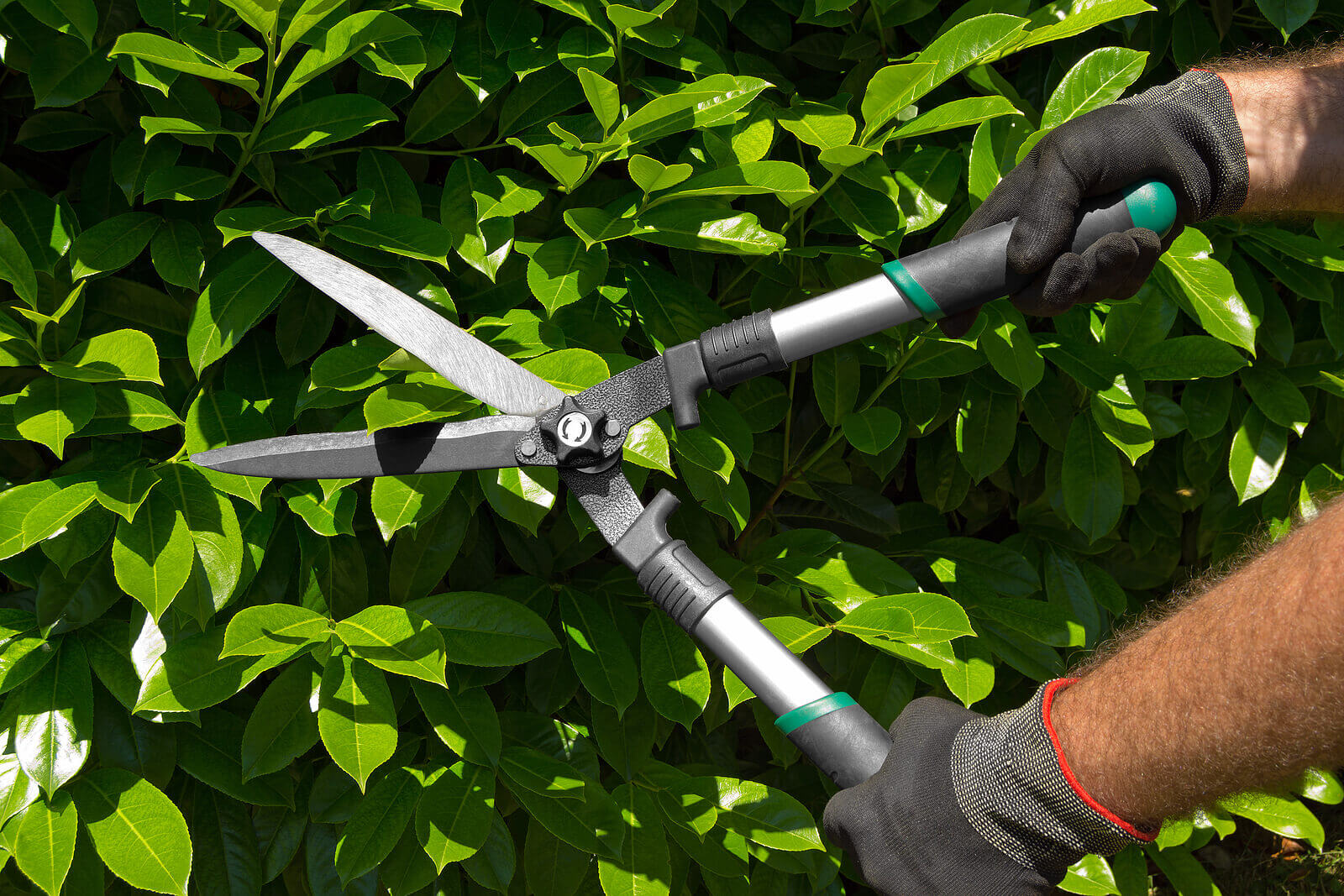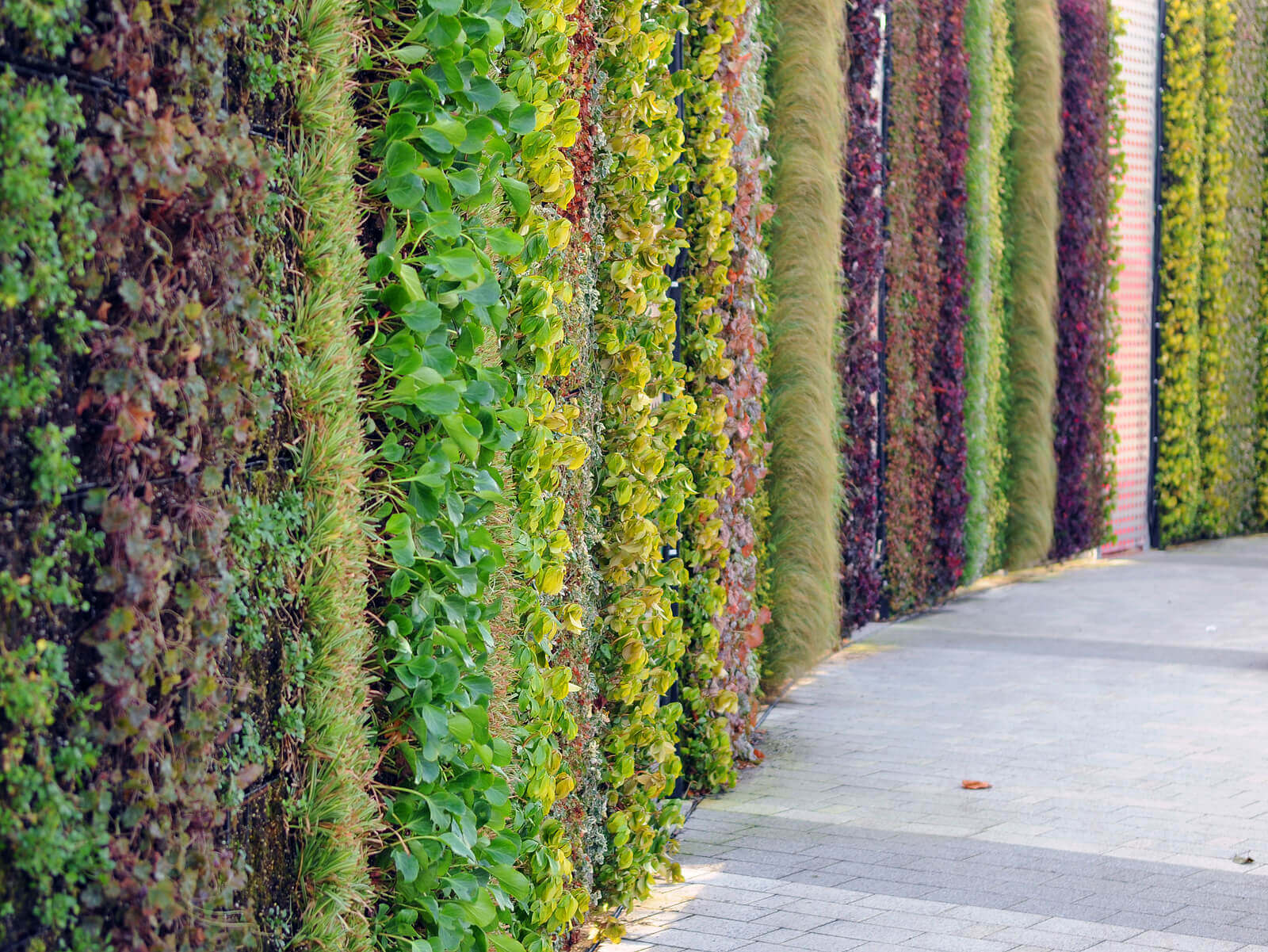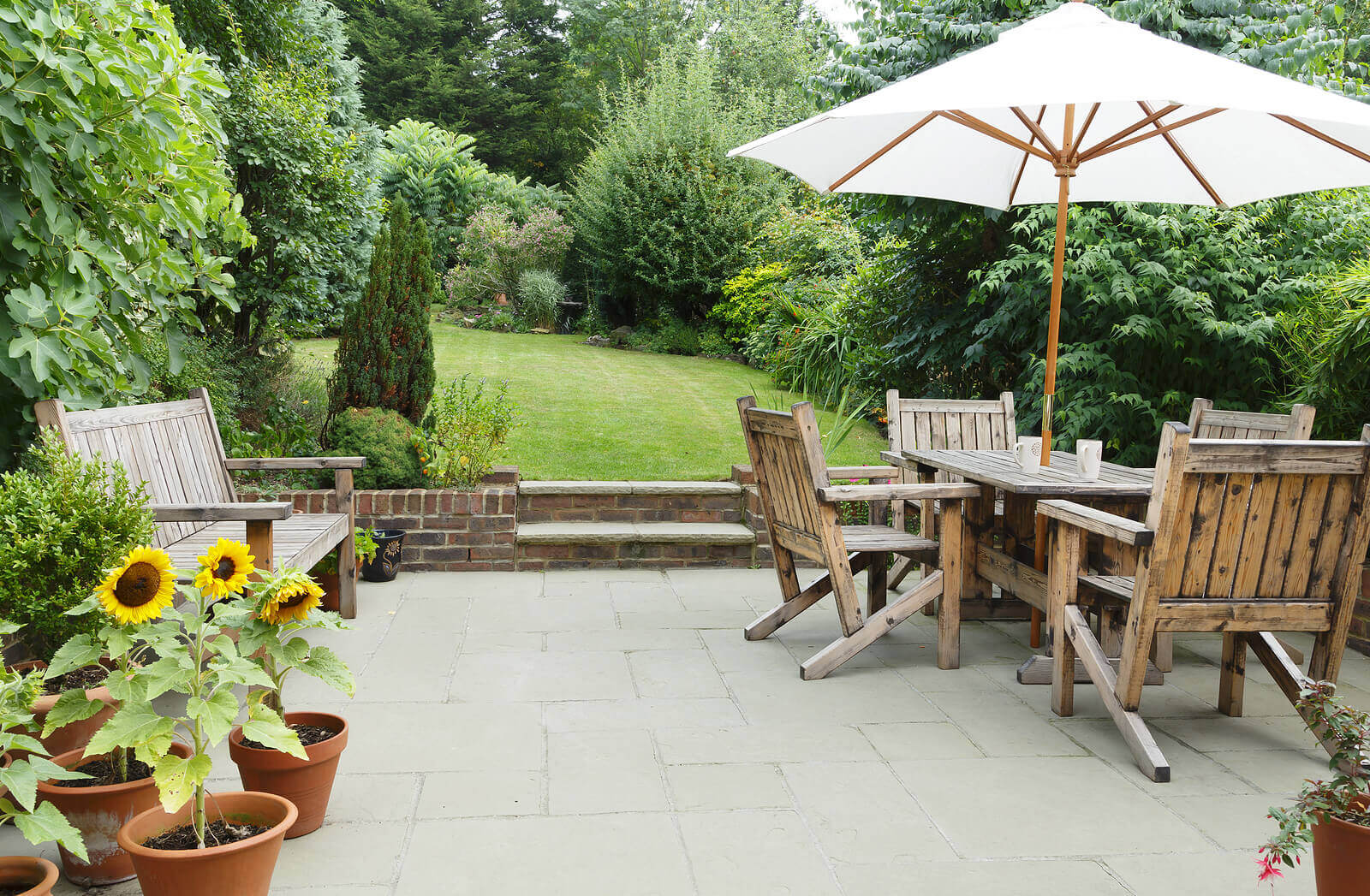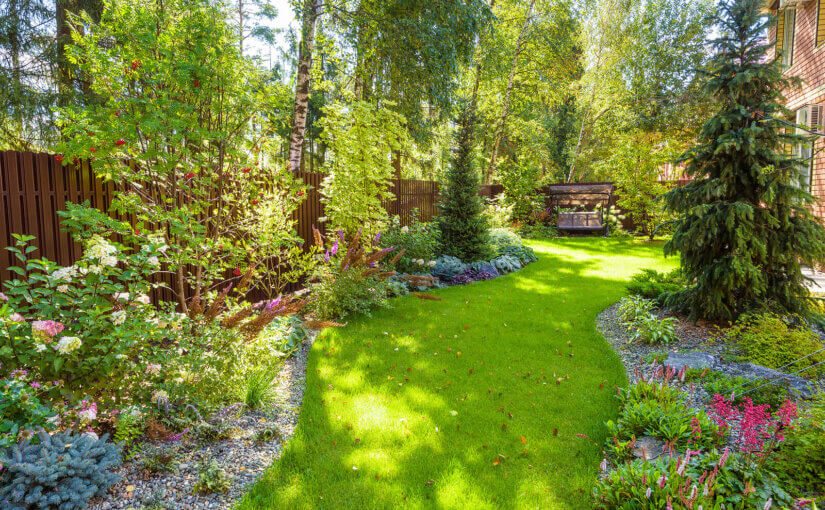Garden space is hard to come by in densely populated areas of the UK. It isn’t easy to unwind when you can sense the constant presence of neighbours or passers-by while in your garden.
This lack of privacy can significantly diminish your outdoor enjoyment. Feeling exposed can also make you hesitant to engage in garden activities you love, like savouring a quiet coffee, hosting family BBQs, or having weekend get-togethers with friends.
Explore our eight garden screening ideas and discover innovative ways to transform your outdoor space into a private sanctuary, divide it into distinct areas, and conceal unsightly views.
1. Erect fencing
Fencing can provide a quick privacy fix in any outdoor space.
Consider erecting a new fence, replacing old panels with taller ones, or adding height to existing panels. Hiring a skip can simplify the process if you need to dispose of old fence panels during this work.
When you don’t have a partition, think beyond traditional solid panel fencing. Seek options that complement your garden’s design, like lattice panels, bamboo screening, or willow and hazel hurdle fencing.
Back garden fences can be up to two metres high in the UK, while front garden fencing is limited to one metre. Anything taller will require planning permission, which is unlikely to be granted.
Before buying a new fence, check it will provide the desired seclusion for your garden or patio areas. If it doesn’t meet your needs, don’t invest — test one of our other garden screening ideas instead.
2. Grow a hedge

Hedging is a natural and cost-effective garden screening solution for enhancing outdoor privacy. It creates a beautiful, green boundary, offering additional benefits like weather protection, noise reduction, and shelter and food sources for wildlife.
If you’re still unconvinced, hedges require minimal maintenance, so they’re ideal for novice gardeners. They typically only need pruning a few times a year to prevent them from becoming too dense or growing too tall.
Select a versatile evergreen and leaf-retaining plant like the cherry laurel, euonymus, or yew for year-round privacy.
3. Plant trees
Planting trees can be an effective solution when patio privacy is a concern. By strategically placing trees around your patio, you can shield your outdoor space from nosy neighbours and enjoy peaceful alfresco dining.
Consider evergreens like yew, olive, holm oak, Italian cypress, and eucalyptus for year-round height and greenery. Deciduous varieties like holly, Japanese maple, and arborvitae are also excellent choices if you prefer seasonal screening and vibrant colour. These options provide adequate seclusion without blocking too much light during the summer months.
Be mindful that tall trees on a boundary can make small gardens feel even smaller. To avoid this issue, select shorter trees or plant small shrubs in front of taller ones to create a sense of depth.
Offer your trees the best chance of success by considering their future location for space, sunlight intensity, soil conditions, and safety. Trees may also want to be planted in a specific season, so consider their optimal time to grow. Proper planning will ensure your trees thrive and enhance your garden.
4. Create a living wall

Vertical gardening is particularly beneficial for small gardens, allowing you to maximise space while concealing unwelcome views or partition walls. Densely planted with various flora, living walls create an aesthetically appealing screen with practical advantages.
Choose robust, short-rooted perennials for your living wall for year-round interest. Prioritise the foliage’s colour, shape, and texture, as this will form the foundation of your wall.
Change the bedding each season with beautiful flowers for a vibrant, dynamic sheet of colour.
5. Use climbing plants
At many houses, the only thing separating one garden from the next is a bare panel fence, which provides minimal privacy.
Climbing plants can create a natural screen on fencing, adding depth and height while reducing noise and disturbances.
Choose twining climbers like honeysuckle or clematis for semi-solid panel fencing or trellises. These plants need an initial structure to wrap their stems around but are self-supporting after that.
Solid fence panels are ideal for tendril climbers like sweet peas, which use their shoots to cling and climb. Aerial root climbers like ivy and hydrangea seemannii love solid panels because they don’t require support structures to grow — they attach directly to the surface.
To maintain climbing plants, prune them every season after flowering. This is also the ideal time to train new growth, mulch, and feed the plants to keep them healthy and thriving.
6. Add an awning
Install an attractive retractable awning on an exterior wall for roll-out privacy and year-round weather protection for you and your outdoor furniture, come rain or shine.
A garden awning also extends your living space outdoors and cools the adjoining interior room in summer by blocking the sun’s glare.
Side panels are available with some awnings, creating an airy outdoor room hidden from prying eyes.
7. Sit under a parasol

You can instantly create reliable shade and patio privacy with a wind-resistant parasol.
Available in various shapes and sizes, parasols are incredibly effective at blocking sunlight and shielding unwanted views.
These free-standing sun umbrellas can be positioned anywhere, so they’re helpful for patios away from a house or exterior wall. Many parasols also feature adjustable tilt mechanisms, allowing you to create shade at any time of day.
With their versatility and ease of use, parasols offer a practical and stylish solution for your outdoor space.
8. Invest in a sunken seating area
If you’ve allocated a large budget for garden screening and don’t have young children, consider creating a covered sunken seating area.
This feature would add visual interest to your garden and lower the eye line, offering a different perspective on garden features and promoting a sense of closeness among guests. It would also provide excellent sun protection and reduce external noise.
A sunken seating area can transform your outdoor space into a cosy, intimate retreat, even if you live in a busy urban environment.
